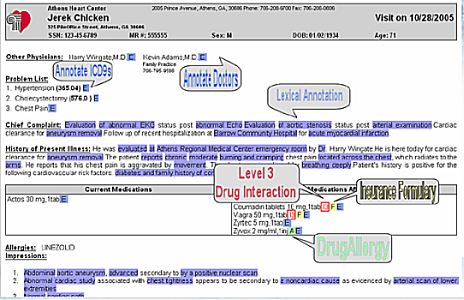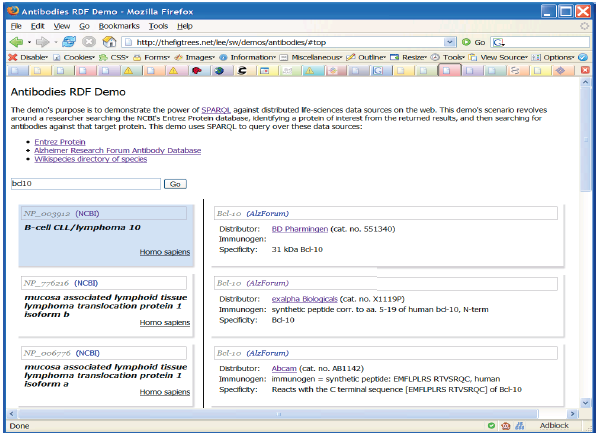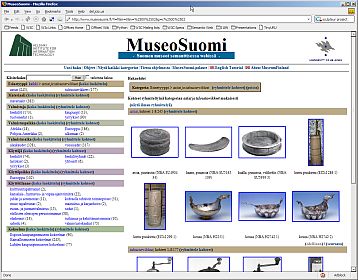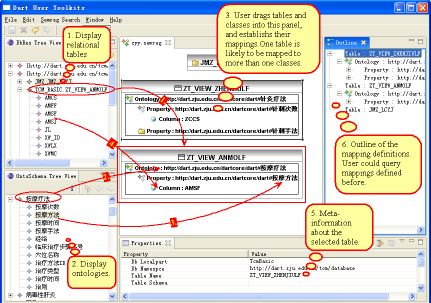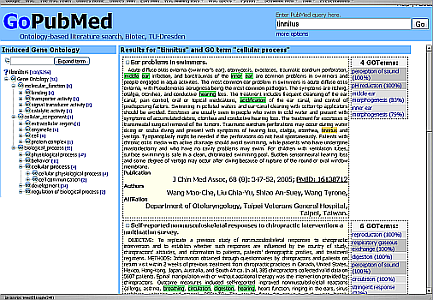Questions (and Answers) on the Semantic Web
XML-Days, Berlin, Germany, 2006-09-27
Ivan Herman, W3C
We all know that, right?
The Semantic Web Artificial Intelligence on the Web
It relies on centrally controlled ontologies for “meaning” as opposed to
a democratic, bottom–up control of terms
One has to add metadata to all Web pages, convert all relational databases, and XML data to
use the Semantic Web
It is just an ugly application of XML
One has to learn formal logic, knowledge representation techniques, description logic, etc
It is, essentially, an academic project, of no interest for industry
…
WRONG!!!!
The Semantic Web Artificial Intelligence on the Web It relies on centrally controlled ontologies for “meaning” as opposed to
a democratic, bottom–up control of terms One has to add metadata to all Web pages, convert all relational databases, and XML data to
use the Semantic Web It is just an ugly application of XML One has to learn formal logic, knowledge representation techniques, description logic, etc
It is, essentially, an academic project, of no interest for industry …
Goal of this presentation…
There are lots of myths around the Semantic Web
This presentation will try to de-mystify at least some of those…
Is the Semantic Web AI on the Web?
So what is the Semantic Web?
Humans can easily “connect the dots” when browsing the Web…
you disregard advertisements
you “know” (from the context) that this link is interesting and goes to my CV; whereas the that one is without interest
etc.
… but machines can’t!
The goal is to have a Web of Data to ensure smooth integration with data, too
Let us see just some application examples…
Example: Automatic Airline Reservation
Your automatic airline reservation
knows about your preferences
builds up knowledge base using your past
can combine the local knowledge with remote services:
airline preferences
dietary requirements
calendaring
etc
It communicates with remote information (i.e., on the
Web!)
(M. Dertouzos: The Unfinished Revolution)
Example: data(base) integration
Databases are very different in structure, in content
Lots of applications require managing several databases
after company mergers
combination of administrative data for e-Government
biochemical, genetic, pharmaceutical research
etc.
Most of these data are now on the Web (though not necessarily public yet)
Example: data integration in life sciences
So what is the Semantic Web?
The Semantic Web is… the Web of Data
It allows machines to “connect the dots”
It provides a common framework to share data on the Web across application boundaries
And what is the relationship to AI?
Some technologies in the Semantic Web has benefited from AI research and development (see later)Semantic Web has also brought some new concerns, problems, use cases to AI
But AI has many many different problems that are not related to the Web at all (image understanding is a good example)
All right, but what is RDF then?
RDF
For all applications listed above the issues are to create relations among resources on the Web and to interchange those data
Pretty much like (hyper)links on the traditional web, except that:
there is no notion of “current” document; ie, relationship is between any two resources
a relationship must have a name: a link to my CV should be differentiated from a link to my Calendar
there is no attached user-interface action like for a hyperlink
RDF (cont.)
RDF is a model for such relationships and interchange
to be a bit more techie: it is a model of (s p o) triplets with p naming the relationship
between s and o URI-s are used as universal naming tools, including for properties (after all, “U” stands for “Universal”…)
That is it (essentially)! Nothing very complex…
But isn’t RDF simply an (ugly) XML application?
RDF is a graph!
As we already said: RDF is a set of relationships
An (s,p,o) triple can be viewed as a labeled edge in a graph
i.e., a set of RDF statements is a directed, labeled graph
the nodes represent the resources that are bound
the labeled edges are the relationships with their names
This set must be serialized for machines; this can be done into XML (using RDF/XML), or to other formats
(Turtle, N-Triples, TriX, …)
Think in terms of graphs, the rest is syntactic sugar!
A Simple RDF Example
<rdf:Description rdf:about="http://www.ivan-herman.net">
<foaf:name>Ivan</foaf:name>
<abc:myCalendar rdf:resource="http://…/myCalendar"/>
<foaf:surname>Herman</foaf:surname>
</rdf:Description>
Yes, RDF/XML has its Problems
RDF/XML was developed in the “prehistory” of XML
e.g., even namespaces did not exist!
Coordination was not perfect, leading to problems
the syntax cannot be checked with XML DTD-s
XML Schemas are also a problem
encoding is verbose and complex (simplifications lead to confusions…)
but there is too much legacy code to change it
Use, e.g., Turtle if you prefer…
<http://www.ivan-herman.net>
foaf:firstName "Ivan";
abc:myCalendar <http://.../myCalendar>;
foaf:surname "Herman".
Again: these are all just syntactic sugar!
RDF environments often understand several serialization syntaxes
In some cases, authoring tools hide the details anyway!
But what has RDF to do with data integration?
Consider this (simplified) bookstore data set
ID
Author
Title
Publisher
Year
ISBN 0-00-651409-X
id_xyz
The Glass Palace
id_qpr
2000
ID
Name
Home page
id_xyz
Amitav Ghosh
http://www.amitavghosh.com/
ID
Publisher Name
City
id_qpr
Harper Collins
London
Export your data as a set of relations…
Add the data from another publisher…
Start merging…
Simple integration…
Note the role of URI-s!
The URI-s made the merge possible
URI-s ground RDF into the Web
URI-s make this the Semantic Web
So what is then the role of ontologies and/or rules?
A possible short answer
Ontologies/rules are there to help integration Let us come back to our example…
This is where we are…
Our merge is not complete yet…
We “feel” that a:author and f:auteur should be the same
But an automatic merge doest not know that!
Let us add some extra information to the merged data:
a:author same as f:auteurboth identify a “Person”:
a term that a community has already defined (part of the “FOAF” terminology)
a “Person” is uniquely identified by his/her name and, say, homepage
it can be used as a “category” for certain type of resources
we can also identify, say, a:name with foaf:name
Better merge: richer queries are possible!
What we did: we used ontologies…
a:author same as f:auteurboth identify a “Person”:
a term that a community has already defined
a “Person” is uniquely identified by his/her name and, say, homepage
it can be used as a “category” for certain type of resources
we can also identify, say, a:name with foaf:name
These statements can be described in an ontology (or, alternatively, with rules)
The ontology/rule serves as some sort of a “glue”
And then the merge may go on…
…and on…
…and on…
Is that surprising?
Maybe but, in fact, no…
What happened via automatic means is done all the time by the (human) users of the Web!
The difference: a bit of extra rigor (eg, naming the relationships),
extra information (eg, identifying relationships) and machines could do this, too
Important issue: “schema independence”
The queries (ie, the application) sees the RDF data only (with references to “real” data)
If the structure (“schema”) of the database changes, only the mapping to RDF has to be changed
this is a very local change
Ie, the RDF layer is very robust vis-a-vis schema evolution (not only to schema differences)
You remember this statement?
It relies on giant, centrally controlled ontologies for “meaning”
Ontologies are usually developed by communities and they are to be shared
in fact, in our example, we used an ontology called “FOAF”
And this?
One has to learn formal logic, knowledge representation techniques, description logic, etc,
to understand the Semantic Web and be able to use it
This “glue” does not have to be complex, it may be of a few lines only
“a little semantics can take you far…”
Tradeoffs
What can be inferred depends on the level of additional knowledge (ie, “glue”) one adds to the original data
More complex ontologies: more inference possibilities, but more complex reasoning procedures
At present, W3C has defined a set of ontology languages (and is working on rules)
An application may choose the complexity it wants
“One has to learn formal logic, knowledge representation techniques, description logic, etc”
Not really…
Yes, the detailed semantics of RDFS, OWL Lite, etc, are based on knowledge representation algorithms
OWL-DL stands for “OWL Description Logic”; it is an embodiment of a Description Logic
…but most users just have to use these
It is just like SQL: the formal semantics is very complex, but 95% of the SQL users have never even looked
at it!
Developing and ontology may require more knowledge, but that is for a small percentage
of users (and there are authoring tools to hide the details)
Where do the data and ontologies come from?
(Should we really expect the author to type in all this data?)
Pure RDF data: not always a solution…
Creating large scale RDF data with an editor is possible, but does not really scale…
although it may be o.k. for small things like the “glue” in our example
Even if it is around: adding RDF to, say, XHTML, is not always easy
there are number of disagreeable technical problems with, eg, validation
the only “clean” approach today is to link it via a meta header element
Data may be around already…
Part of the (meta)data information is present in tools … but thrown away at output
e.g., a business chart can be generated by a tool…
…it “knows” the structure, the
classification, etc. of the chart, but, usually, this information is lost
storing it in web data would be easy!
“SW-aware” tools are around (even if you do not know it…), though more would be good:
Photoshop CS stores metadata in RDF in, say, jpg files (referred to
as XMP )
RSS 1.0 feeds are
generated by (almost) all blogging systems (a huge amount of RDF data!)
…
Data may be extracted (a.k.a. “scraped”)
Different tools, services, etc, come around every day:
get RDF data associated with images, for example:
XSLT scripts to retrieve microformat based information from XHTML files
scripts to convert spreadsheets to RDF
etc
Most of these tools are still individual “hacks”, but show a general tendency
Formalizing the scraper approach: GRDDL
GRDDL
formalizes the scraper approach. For example:
<html xmlns="http://www.w3.org/1999/">
<head profile="http://www.w3.org/2003/g/data-view">
<title>Some Document</title>
<link rel="transformation" href="http:…/dc-extract.xsl"/>
<meta name="DC.Subject" content="Some subject"/>
...
</head>
...
<span class="date">2006-01-02</span>
...
</html>
yields, by running the file through
dc-extract.xsl
<rdf:Description rdf:about="…">
<dc:subject>Some subject</dc:subject>
<dc:date>2006-01-02</dc:date>
</rdf:Description>
GRDDL (cont)
Somebody has to provide dc-extract.xsl and use its conventions (making use of the corresponding meta-s, class id-s, etc…)
… but, by using the profile attribute, a client is instructed to find and run the transformation processor automatically
A “bridge” to “microformats”
A W3C Working Group has just started, with a recommendation planned in the 1st Quarter of 2007
Another Future Solution: RDFa
RDFa (formerly known as RDF/A) extends XHTML by:
extending the link and meta elements to include children
defining general attributes to add metadata to any elements (a bit like the class in
microformats, but via dedicated properties)
It is very similar to microformats, but with more rigor:
it is a general framework (instead of an “agreement” on the meaning
of, say, a class attribute value)
terminologies can be mixed more easily
The W3C Working Group on SW Deployment has this on its charter
RDFa example
<div about="http://uri.to.newsitem">
<span property="dc:date">March 23, 2004</span>
<span property="dc:title">Rollers hit casino for £1.3m</span>
By <span property="dc:creator">Steve Bird</span>. See
<a href="http://www.a.b.c/d.avi" rel="dcmtype:MovingImage">
also video footage</a>…
</div>
yields, by running the file through a processor:
<http://uri.to.newsitem>
dc:date "March 23, 2004";
dc:title "Rollers hit casino for £1.3m;
dc:creator "Steve Bird";
dcmtype:MovingImage <http://www.a.b.c/d.avi>.
Common in RDFa and GRDDL
The user authors XHTML as usual
The result is displayed as usual
The author may add some annotations that leads to RDF
Linking to SQL
A huge amount of data in Relational Databases
Although tools exist, it is not feasible to convert that data into RDF
Instead: SQL ⇋ RDF “bridges” are being developed:
a query to RDF data is transformed into SQL on-the-fly
the modalities are governed by small, local ontologies or rules
An active area of development!
And for Ontologies?
The hard work is to create the ontologies in general
requires a good knowledge of the area to be described
some communities have good expertise already (e.g., librarians)
OWL is just a tool to formalize ontologies
Large scale ontologies are often developed in a community process
leading to versioning issues, too
OWL includes predicates for versioning, deprecation, “same-ness”, …
There is also R&D in generating them from a corpus of data
still mostly a research subject
Sharing ontologies may be vital in the process
There are already ontologies around…
Lots of ontologies registered at Schemaweb
DAML ontology library has
several hundreds of ontologies
Ontologies are being developed by various communities:
Use existing ontologies when you can!
“Core” vocabularies
A number of public “core” vocabularies evolve to be used by applications, e.g.:
SKOS Core : about knowledge systems
Dublin Core : about information resources, digital libraries, with extensions for rights, permissions, digital right management
FOAF : about people and their organizations
DOAP : on the descriptions of software projects
MusicBrainz : on the description of CDs, music tracks, …
SIOC : Semantically-Interlinked Online Communities…
A mix of ontologies (a life science example)…
How do I extract triplets from and RDF Graph? Ie: how do I query an RDF Graph?
Querying RDF graphs
RDBS model has a query language: SQL
RDF (graph) model needs a query language: SPARQL
Simple SPARQL Example
SELECT ?cat ?val # note: not ?x!
WHERE { ?x rdf:value ?val. ?x category ?cat }
Returns: [["Total Members",100],["Total
Members",200],…,["Full Members",10],…]
Other SPARQL features
Define optional patterns
Limit the number of returned results; remove duplicates, sort them,…
Add functional constraints to pattern matching
Return a full subgraph (instead of a list of bound variables)
Use datatypes and/or language tags when matching a pattern
SPARQL is not yet finalized, but will become a Recommendation (hopefully) in 2nd Quarter of 2007
SPARQL as a federating tool
Isn't This Research Only?
(or: does this have any industrial relevance whatsoever?)
Not any more…
Lots of tools are available. Are listed on W3C’s wiki :
RDF programming environment for 14+ languages, including C, C++, Python, Java,
Javascript, Ruby, PHP,… (no Cobol or Ada yet
13+ Triple Stores, ie, database systems to store (sometimes huge!) datasets
a number programming environments (in Java, Prolog, …) include OWL reasoners
there are also stand-alone reasoners (downloadable or on the Web)
etc
Some of the tools are Open Source, some are not; some are very mature, some
are not it is the usual picture of software tools , nothing special any more!
Anybody can start developing RDF-based applications today
Not any more… (cont)
SW has indeed a strong foundation in research results
But remember:
(1) the Web was born at CERN…
(2) …was first picked up by high energy physicists…
(3) …then by academia at large…
(4) …then by small businesses and start-ups…
(5) “big business” came only later!
network effect kicked in early…
Semantic Web is now at #4, and moving to #5!
Some RDF deployment areas (cont)
Some deployment areas are already very active: Health Care and
Life Sciences, Digital Libraries, Defense
also at W3C, in the form of an Interest Group for HCLS
Others are coming to the fore: eGovernment, energy sector (oil industry), financial services, …
The “corporate” landscape is moving
See, for example, the Semantic Technology Conference series
not a scientific conference, but commercial people making real money!speakers in 2006: from IBM, Cisco, BellSouth, GE, Walt Disney, Nokia, Oracle, …
not all referring to Semantic Web (eg, RDF, OWL, …) but semantics in general
but they might come around!
Major companies offer (or will offer) Semantic Web tools or systems using Semantic
Web: Adobe, Oracle, IBM, HP, Software AG, webMethods, Northrop Gruman, Altova, …
“Corporate Semantic Web” listed as major technology by Gartner in 2006
Applications are not always very complex…
Eg: simple semantic annotations of patients’ data greatly enhances communications among doctors
What is needed: some simple ontologies, an RDFa/microformat type editing environment
Simple but powerful!
Data integration
Data integration comes to the fore as one of the SW Application areas
Very important for large application areas (life sciences, energy sector, eGovernment, financial institutions),
as well as everyday applications (eg, reconciliation of calendar data)
Life sciences example:
data in different labs…
data aimed at scientists, managers, clinical trial participants…
large scale public ontologies (genes, proteins, antibodies, …)
different formats (databases, spreadsheets, XML data, XHTML pages)
etc
Example: antibodies demo
Scenario: find the known antibodies for a protein in a specific species
Combine (“scrape”…) three different data sources
Use SPARQL as an integration tool (see also demo online )
There has been lots of R&D
Portals
Improved Search via Ontology: GoPubMed
Improved search on top of pubmed.org
search results are ranked using the specialized ontologies
extra search terms are generated and terms are highlighted
Importance of domain specific ontologies for search improvement
Summary
The Semantic Web is not as complex as people believe
The Semantic Web does not require huge investments before seeing its value
The Semantic Web is not only for geeks…
Thank you for your attention!
(Slides are available from: http://www.w3.org/2006/Talks/0927-Berlin-IH/)
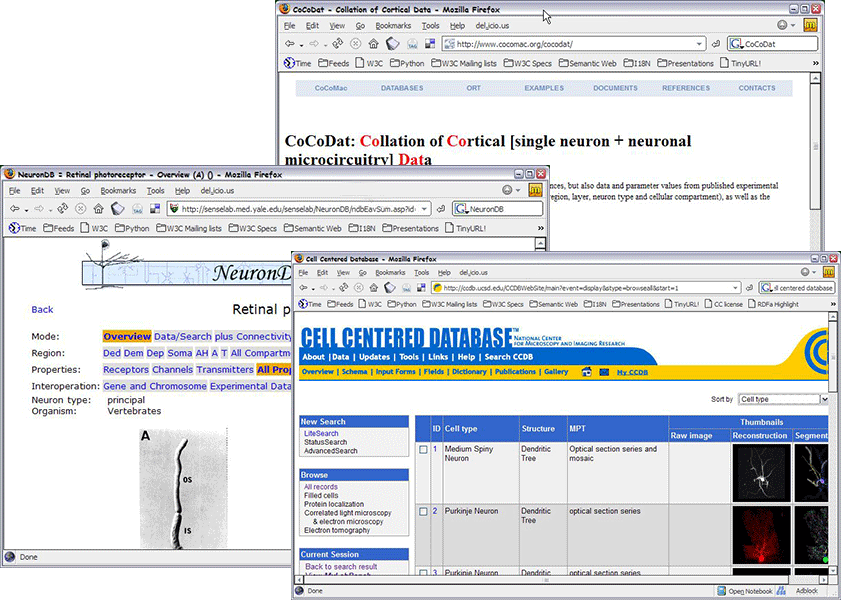
 !)
!) :
it is the usual picture of software tools, nothing special any more!
:
it is the usual picture of software tools, nothing special any more!